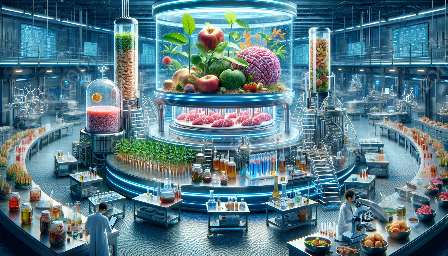Biopreservation techniques play a significant role in maintaining the quality and safety of food products in the food industry. By harnessing the power of biotechnology, novel food production techniques are revolutionizing the way we approach food preservation. In this cluster, we will explore the latest biopreservation methods and their compatibility with novel food production techniques using biotechnology, while also considering the impact of food biotechnology on the industry.
Understanding Biopreservation Techniques
Biopreservation refers to the use of natural or controlled microbiota to extend the shelf life and ensure the safety of foods. This approach involves the application of beneficial microorganisms and their metabolic by-products, such as organic acids and bacteriocins, to inhibit the growth of spoilage and pathogenic microorganisms.
Several biopreservation techniques have gained prominence in the food industry due to their ability to maintain the sensory characteristics and nutritional value of foods without the need for synthetic additives or excessive processing. Some common biopreservation methods include:
- Fermentation: This traditional method involves the controlled growth of microorganisms, such as lactic acid bacteria and yeast, to produce a range of metabolites that contribute to the preservation of food products.
- Bioprotective Cultures: Certain strains of bacteria and fungi are used to compete with spoilage organisms, thereby preventing their growth and maintaining the quality of the food.
- Bacteriocins: These are proteinaceous compounds produced by bacteria that can inhibit the growth of closely related strains, including foodborne pathogens, making them effective natural preservatives.
- Microbial Metabolites: The metabolic by-products of microorganisms, such as organic acids and hydrogen peroxide, can create an inhospitable environment for spoilage and pathogenic microorganisms.
Integration with Novel Food Production Techniques Using Biotechnology
The advancements in biotechnology have opened new frontiers in food production and preservation. When biopreservation techniques are combined with novel food production methods, they create a synergistic effect that enhances the overall quality and safety of food products.
Novel food production techniques using biotechnology, such as genetic engineering, metabolic engineering, and synthetic biology, enable the development of tailored microorganisms with specific properties to improve food preservation. By leveraging the power of biotechnology, new biopreservation methods can be designed to target particular spoilage or pathogenic microorganisms, thereby ensuring a higher degree of food safety and quality.
Furthermore, the use of biotechnology allows for the development of bioprotective cultures with enhanced capabilities, such as increased tolerance to environmental stresses and the production of novel antimicrobial compounds. These cultures can be integrated into novel food production processes to deliver more robust preservation solutions that align with consumer demands for natural and clean-label products.
Impact of Food Biotechnology on the Industry
Food biotechnology has not only revolutionized food preservation techniques but has also transformed the way the industry approaches food safety, sustainability, and consumer preferences.
Biotechnological interventions have facilitated the development of bio-based packaging materials that contribute to the extended shelf life of food products while reducing the environmental impact of packaging waste. Additionally, biotechnology has enabled the production of bioactive compounds with functional properties, such as antimicrobial peptides and enzymes, which can be utilized in biopreservation methods to enhance the safety and nutritional value of foods.
Moreover, the integration of food biotechnology with biopreservation techniques has paved the way for the introduction of probiotics and prebiotics in food products, offering potential health benefits to consumers while extending the product's shelf life through microbial activity.
In conclusion, the continuous advancements in biopreservation techniques, coupled with the innovative applications of food biotechnology, are shaping the future of the food industry. By embracing these technologies, food producers can meet the growing demand for safe, high-quality, and sustainable food products, while also aligning with changing consumer preferences and regulatory requirements.

